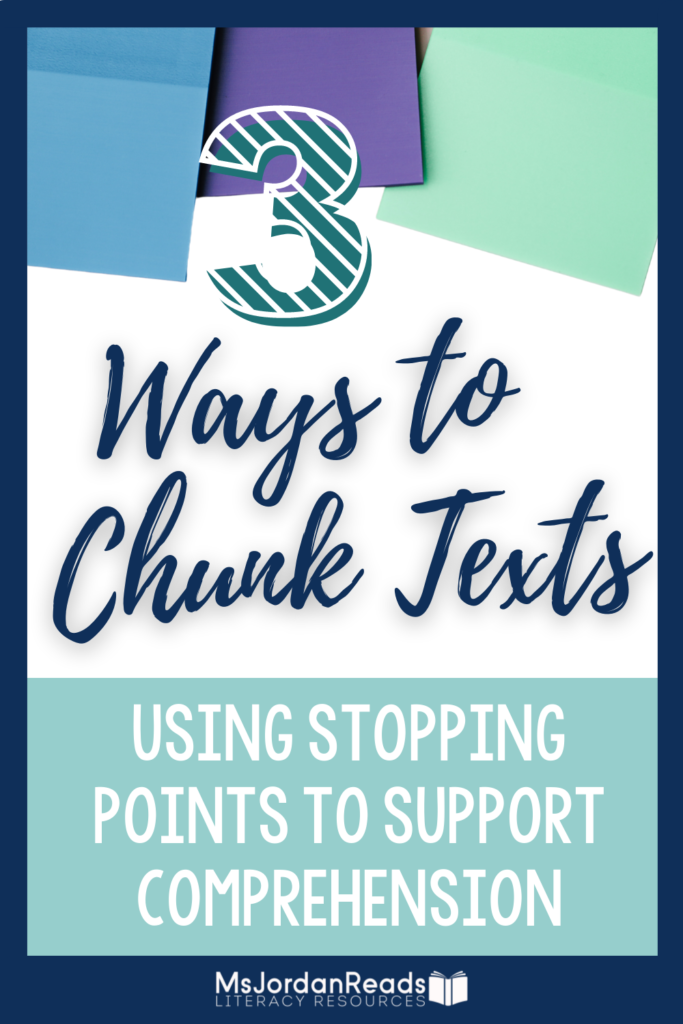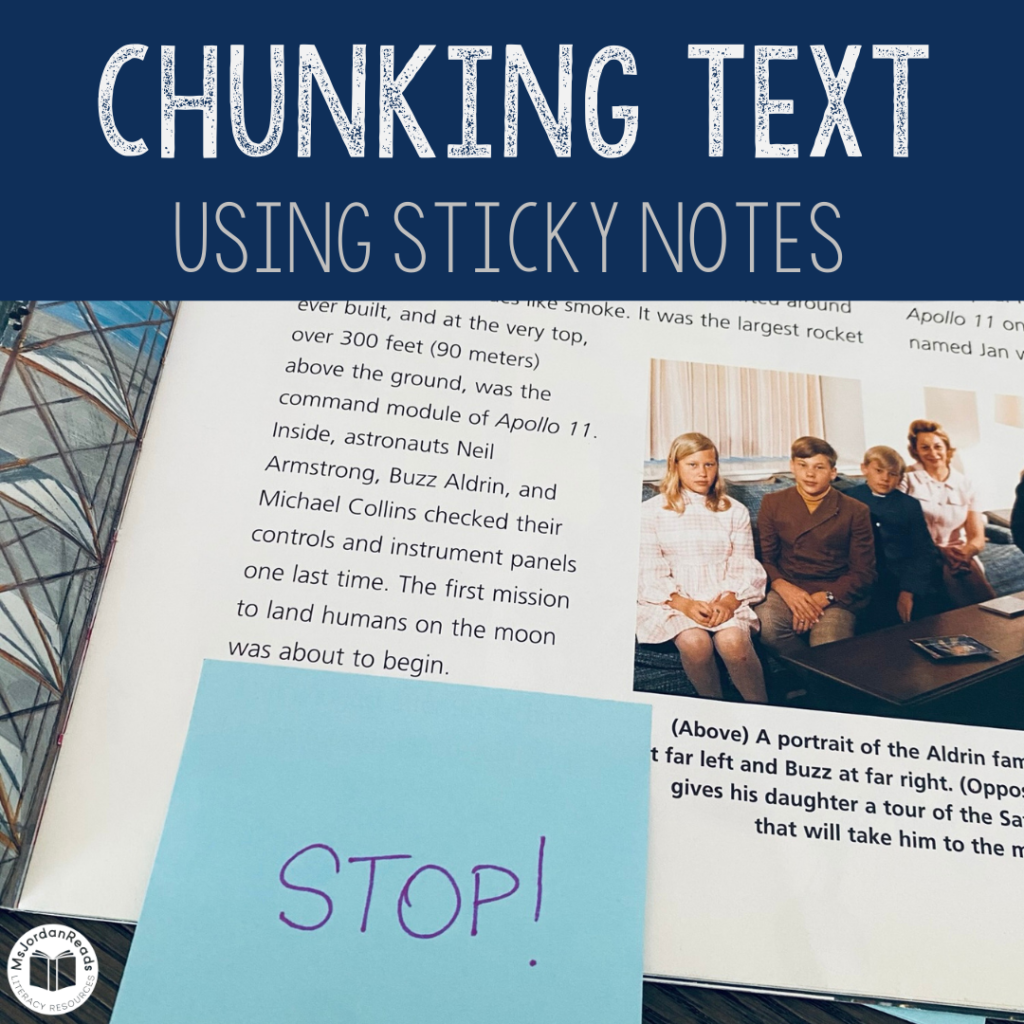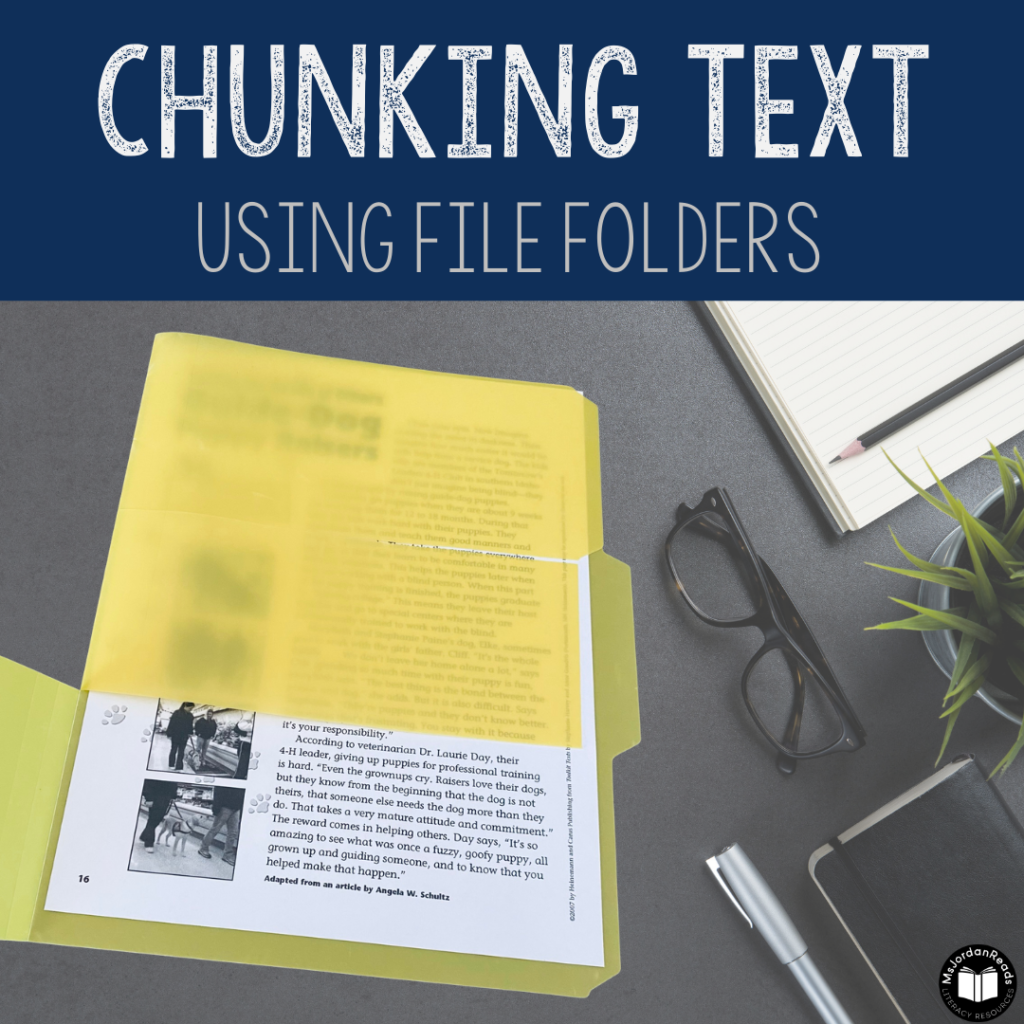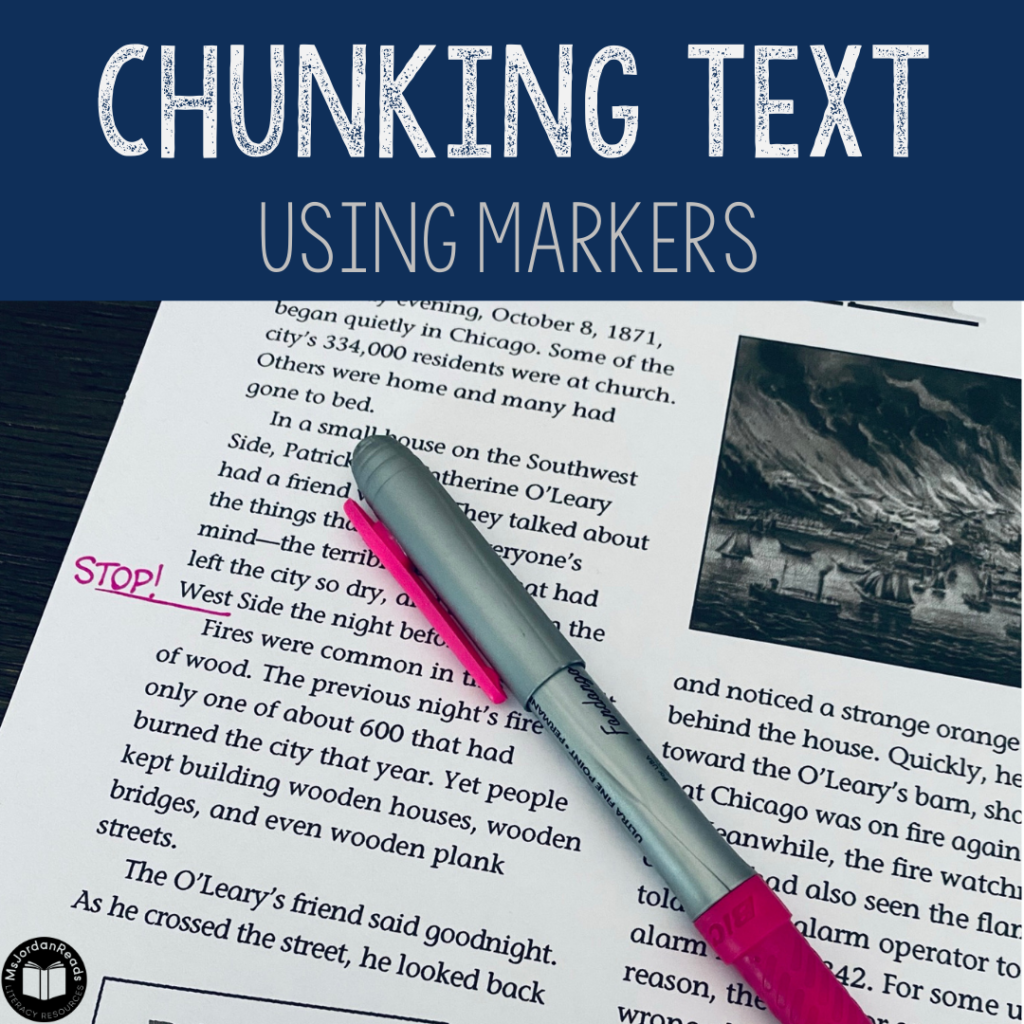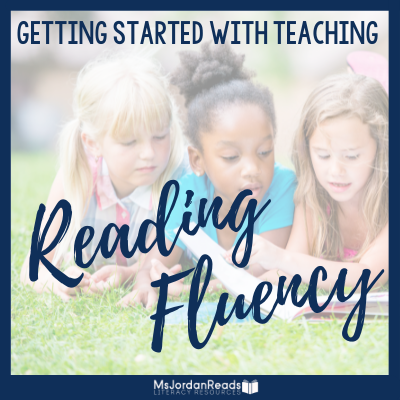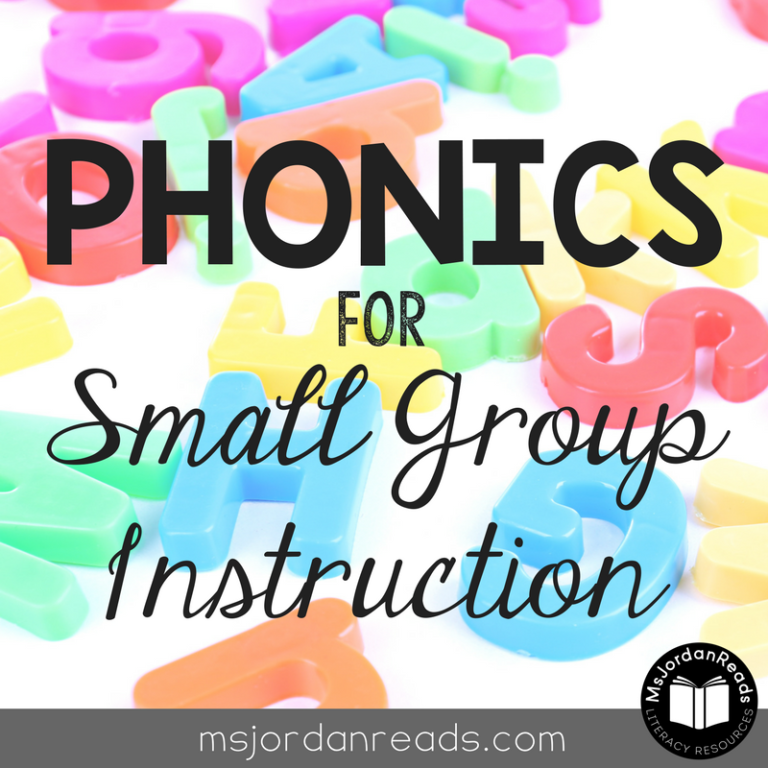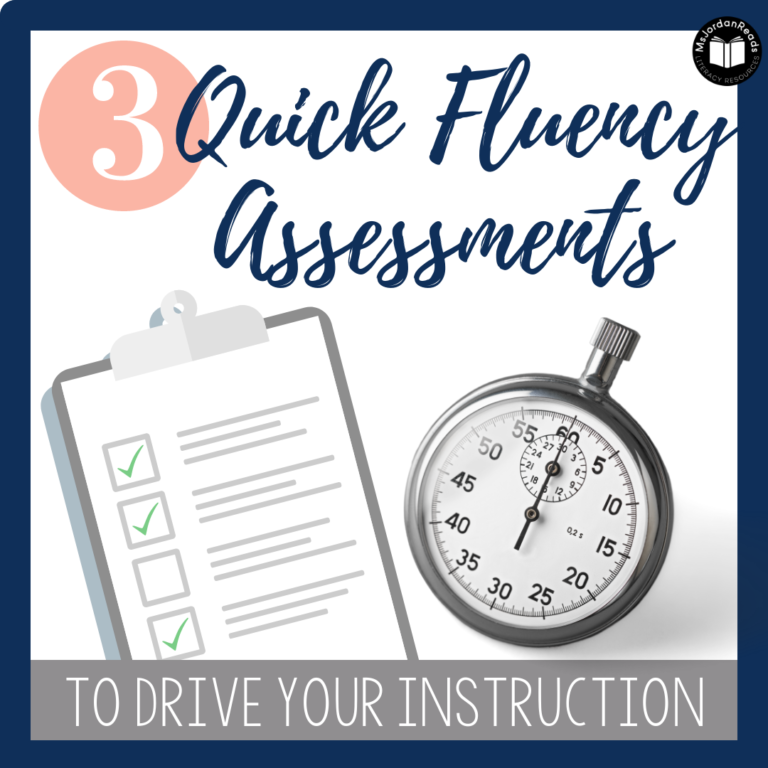3 Ways to Chunk Text to Support Reading Comprehension
Comprehension is essential to reading and understanding texts; however, it is one of the more challenging reading skills to teach. Research shows that students who struggle with reading comprehension often struggle with foundational reading skills, such as decoding or fluency; therefore it’s important to strengthen foundation skills so students can focus their mental energy on reading for meaning.
Unfortunately, you can’t control your students thinking or flip a switch to turn on their ability to comprehend (wouldn’t that be nice?), but there are still plenty of things you CAN do.
- You CAN provide interventions for phonemic awareness, phonics, and decoding so students can shift their focus to comprehension.
- You CAN provide instructional support and coaching to guide students in developing their comprehension skills.
- You CAN teach strategies and tools to help students comprehend what they’re reading independently.
- You CAN provide scaffolding to help students navigate difficult texts and improve their confidence with reading.
Scaffolding Texts Using “Chunking”
Scaffolding texts is an easy-to-implement, highly effective instructional support to help students read longer texts with more proficiency and confidence. There are many scaffolding strategies you can try, but text “chunking” is the perfect strategy to support your beginner or struggling readers.
If you aren’t familiar with the term “chunking,” it means separating something into smaller, more manageable pieces. Think about eating a pizza; we don’t just shove the whole pie into our mouths. We cut it into slices and then break it up further into smaller pieces by taking bites. Now apply that to a text! There are often chapters or sections, and then paragraphs within each of those chapters and sections to break it up further.
Research shows that struggling readers can improve their comprehension when the material is broken down into smaller parts. Most students do not naturally know how to break up texts. They need scaffolding support to know where these stopping points are, and they also need strategies for what to do when they reach these stopping points.
3 Ways to Chunk a Text
At first, you will need to scaffold the scaffolding strategy! When introducing the text chunking strategy, you will need to explicitly model how to chunk the text and where to create stopping points. The goal is to teach them how to identify the natural stopping points on their own, but most students probably won’t know how to do this effectively on their own right away.
Students respond well to visual cues. There are a few ways you can chunk the text and mark where the stopping points are. By visually marking the text, it signals them to pause their reading to focus on comprehension.
1. Sticky Note Stop Signs
Sticky note stop signs are my go-to tool for this strategy! All you have to do is write the word “STOP!” or draw a stop sign on a sticky note. Students can easily do this on their own, or you can download my free stop sign template for ready-to-use sticky note stop signs!
To use the sticky note stop signs for text chunking, students will place the sticky note at the bottom of a page, section, or paragraph. Wherever the stopping point is, the sticky note will be a visual reminder for the student to stop and think after they read that section. Sticky notes are great for texts that you can’t mark up, such as books.
2. File Folders
Another idea for chunking is to use a file folder to help the student focus on one section of the text at a time. This works excellent for printed text or articles. To create a text chunking file folder, all you have to do is cut the front of the folder to create flaps. Depending on grade-level and ability, some students may need three chunks and others may need four or five.
To use the file folders for text chunking, the student will open one flap at a time to read the part of the text that is underneath. They will then check for understanding and apply comprehension strategies related to the chunk of text they just read. Students will continue reading the broken-up sections of text using the flaps until the entire text is complete. This file folder strategy is especially helpful for students who are visually overwhelmed by large amounts of text or struggle with low reading confidence.
3. Marking Up Texts
Marking up a text is another way to use the chunking strategy. This text scaffolding tool is especially helpful for printed passages and articles, or even digital texts that you can annotate.
To mark up texts for text chunking, students will use a writing tool to indicate where they need to stop. They can draw a line, make a symbol (e.g., star, asterisk, etc.), or can just write the word “STOP!” after each chunk or section. They will then read the text and use the marked up text to signal when they have to stop and think.
Once students get the hang of using stopping points, you will need to teach them how to identify possible spots for breaking up a text. Model how to look for chapters, headings, and other natural breaks in the text that would make a great place to stop and think (this is a great opportunity to review fiction and nonfiction text features!). As students make progress with this chunking strategy, gradually release the responsibility of identifying stopping points and allow students to do this independently.
Coming Soon… Stop and Think!
Chunking texts using stopping points encourages students to pause their reading to think about the text. It encourages active reading and allows them to monitor their reading to check for understanding.
Stay tuned for my next blog post about the different comprehension strategies that can be used with chunking and applied at the stopping points. I will be sharing more about the active reading strategies I use (i.e., Read, Stop, Think and Thinking Tracks), as well as the Click & Clunk strategy my students use for monitoring comprehension.


